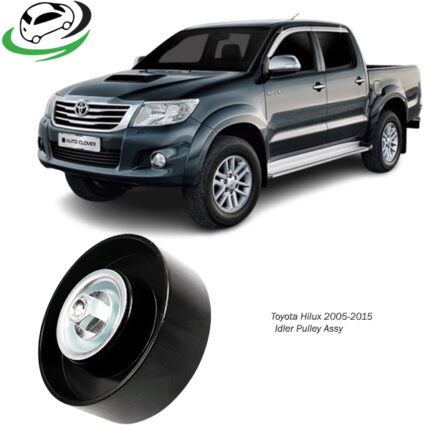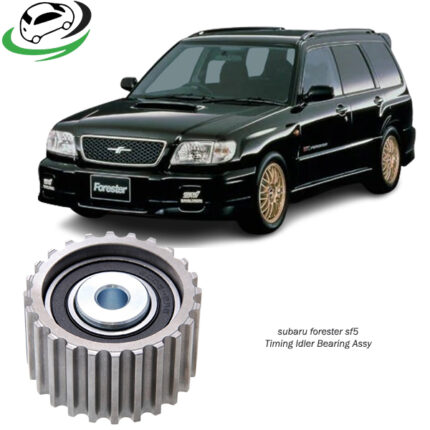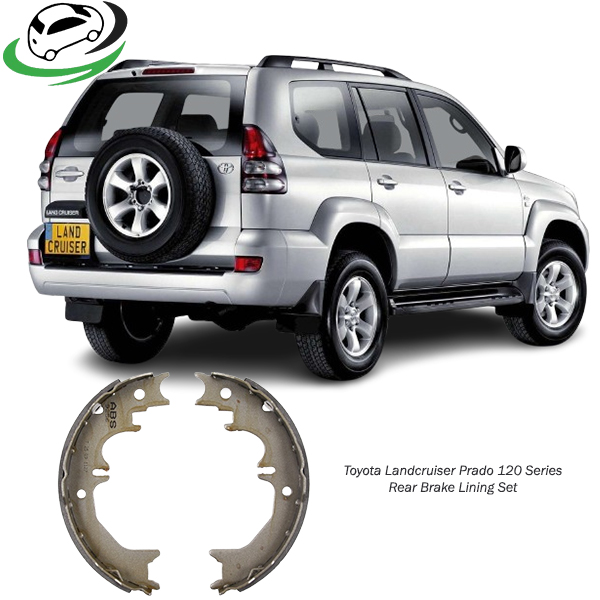-10%
Get Toyota Land Cruiser Prado 120 Series Rear Brake Lining Set 4654060060
The rear brake lining set is a vital component in drum brake systems, often used in the rear brakes of many vehicles. It consists of the brake linings, which are friction materials attached to the brake shoes. When you press the brake pedal, the linings press against the brake drum, creating the friction needed to slow down or stop the vehicle. Understanding the function, benefits, types, and maintenance of the rear brake lining set can ensure safer driving and help maintain overall vehicle performance.
1. Components of a Rear Brake Lining Set
A typical rear brake lining set includes:
- Brake Linings: These are high-friction materials attached to the brake shoes. They make contact with the drum to slow down or stop the vehicle.
- Brake Shoes: Metal frames that hold the brake linings in place. They are usually curved to fit inside the brake drum.
- Brake Drums: Although not part of the lining set itself, the brake drum works closely with the linings. When the linings press against the drum, friction is generated, allowing the car to stop.
2. Function of the Rear Brake Lining Set
The rear brake lining set plays a crucial role in vehicle braking:
- Friction Generation: Brake linings create friction against the rotating brake drum, slowing down or stopping the vehicle.
- Heat Dissipation: Good quality brake linings are designed to withstand high temperatures. This feature helps them to dissipate heat effectively, preventing the brake system from overheating during prolonged use.
- Load Distribution: Rear brakes often provide less braking force than front brakes, but they are still essential for balanced braking. Rear brake linings help distribute braking loads evenly, contributing to vehicle stability.
3. Types of Rear Brake Linings
Different materials are used for brake linings, each with its advantages and drawbacks:
- Organic Brake Linings: Made from non-metallic compounds, organic linings provide quiet operation and minimal wear on brake drums. However, they may not perform as well under high heat and heavy loads.
- Semi-Metallic Brake Linings: These linings combine metal shavings with other compounds. They offer better heat dissipation and durability than organic linings, but can cause more wear on the brake drums.
- Ceramic Brake Linings: Known for superior heat dissipation and quiet operation, ceramic linings are long-lasting and perform well under heavy braking conditions. They are also less likely to produce brake dust, which keeps the wheels cleaner.
4. Benefits of Using High-Quality Brake Linings
High-quality brake linings offer several benefits that impact both vehicle safety and longevity:
- Enhanced Safety: Effective brake linings ensure reliable braking performance, particularly in emergencies or during long descents.
- Increased Durability: Quality linings are designed to last longer, even under frequent use, reducing the need for frequent replacements.
- Improved Heat Resistance: High-quality linings dissipate heat more effectively, reducing the risk of brake fade during prolonged braking.
- Noise Reduction: Many modern brake linings incorporate noise-reducing technologies, ensuring quieter braking.
5. Maintenance Tips for Rear Brake Linings
Regular maintenance of rear brake linings can enhance performance and prolong their lifespan:
- Regular Inspections: Check brake linings for wear and tear every 12,000 to 15,000 miles or as recommended by the manufacturer. Look for signs of cracking, glazing, or thinning.
- Keep the Drums Clean: Brake dust and other contaminants can accumulate in the drum. Regularly cleaning the drums and linings can prevent unnecessary wear and ensure smoother braking.
- Lubricate Moving Parts: Lubricate the brake shoe contact points on the backing plate and adjuster mechanism. Avoid applying lubricant to the linings or drum surfaces.
- Adjust the Brakes: Drum brakes often require manual adjustments to keep the brake shoes close to the drum. Proper adjustment reduces the distance the brake pedal needs to travel and ensures efficient braking.
6. Signs of Worn Rear Brake Linings
Worn brake linings can compromise braking performance, so it’s essential to recognize the signs of wear:
- Reduced Braking Power: A decrease in braking efficiency may indicate that the linings are worn out.
- Squealing or Grinding Noise: Squealing or grinding noises while braking are often signs that the brake linings have worn down.
- Vibrations: Feeling vibrations through the brake pedal when applying the brakes may indicate uneven or worn brake linings.
- Soft Brake Pedal: If the brake pedal feels soft or spongy, it may be due to worn brake linings or air in the brake lines.
7. Replacement Process for Rear Brake Linings
Replacing the rear brake lining set requires some mechanical knowledge, but here’s a general overview:
- Lift the Vehicle and Remove the Wheel: Safely lift the vehicle and remove the rear wheels to access the brake drum.
- Remove the Brake Drum: Depending on the vehicle, you may need to release the brake adjuster or remove retaining clips to remove the drum.
- Inspect and Remove Old Linings: Inspect the linings for wear, and if they’re significantly worn, remove them from the brake shoes.
- Install New Linings: Attach the new linings to the brake shoes, ensuring they are securely fastened and properly positioned.
- Reinstall the Brake Drum: Reattach the brake drum, making sure it fits snugly.
- Adjust the Brakes: Adjust the brakes as necessary, and test the brake pedal to ensure proper engagement.
- Reassemble: Put the wheel back on and lower the vehicle.
8. Choosing the Right Rear Brake Lining Set
Choosing the right brake lining set can have a significant impact on performance and longevity:
- Check Compatibility: Always select a brake lining set that is compatible with your vehicle’s make and model.
- Opt for Quality Brands: Quality brands offer materials that provide better performance, noise reduction, and longevity.
- Consider Driving Conditions: If you drive in harsh conditions or carry heavy loads, consider linings with higher durability and heat resistance.
9. Conclusion
The rear brake lining set is an integral part of a vehicle’s braking system, ensuring safe and reliable stopping power. By understanding the components, types, benefits, and maintenance practices associated with brake linings, vehicle owners can make informed choices to keep their braking system in top condition. Regular inspection and timely replacement of worn linings will extend the lifespan of the brake system and ensure safer driving experiences.
Follow us on Facebook for more parts.




Reviews
Clear filtersThere are no reviews yet.